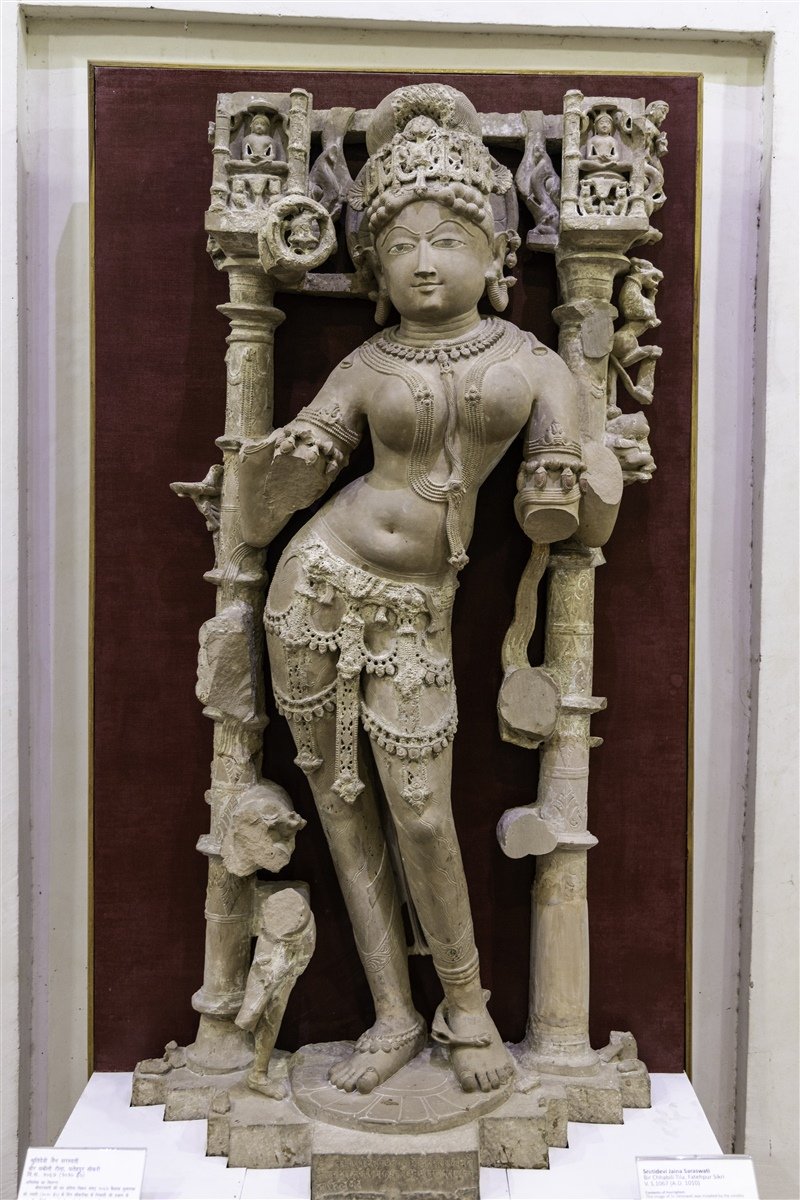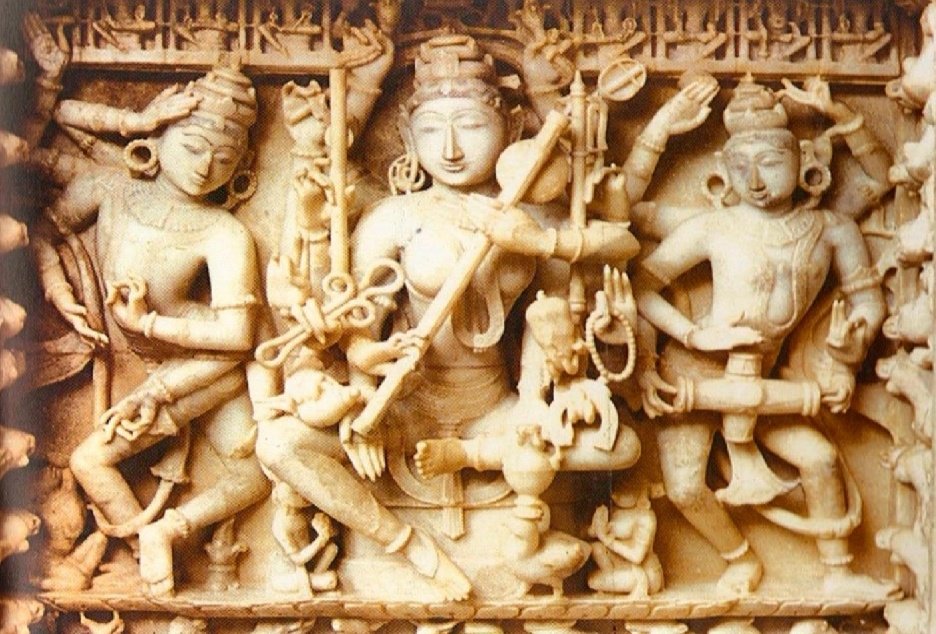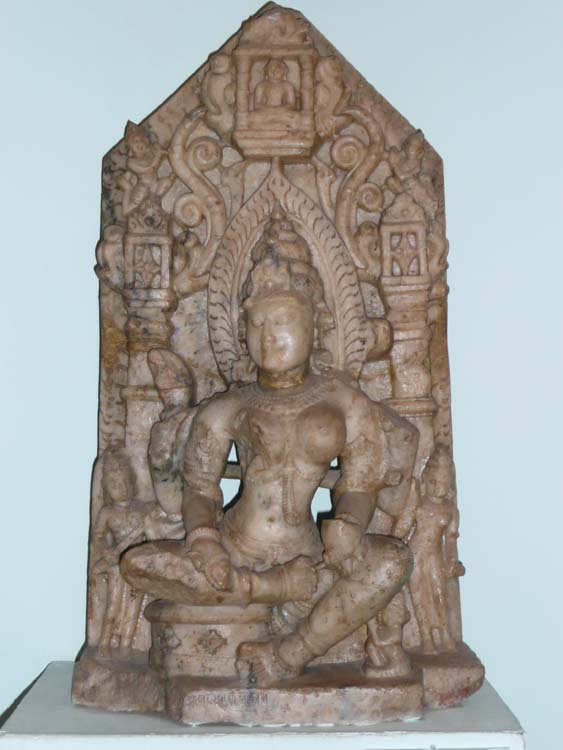Saraswati the presiding goddess of wisdom & knowledge was popular with dharmic tradition since ancient times
In jainism she appears as"Shrutā Devi"
She has a powerful & beautiful presence in many Jain texts & Jain temples
Do read the entire thread ..
#BasantPanchami
In jainism she appears as"Shrutā Devi"
She has a powerful & beautiful presence in many Jain texts & Jain temples
Do read the entire thread ..
#BasantPanchami

Starting with the earliest sculpture of Devi Saraswati found anwyhere in the world
This is more than 2000 years old image of goddess Sarasvati discovered in mathura.
As per inscription below it was installed by Jain layman at kankali -tila.
This is more than 2000 years old image of goddess Sarasvati discovered in mathura.
As per inscription below it was installed by Jain layman at kankali -tila.

Jains have adorned shrutdevi with some of most beautiful sculpture
This divine idol of devi Saraswati is from pallu rajasthan (10th century)
The art connoisseurs have praised this sculpture very highly & have called this one of the "greatest masterpices of medieval India"
This divine idol of devi Saraswati is from pallu rajasthan (10th century)
The art connoisseurs have praised this sculpture very highly & have called this one of the "greatest masterpices of medieval India"

Coming to fatehpur sikhri,some 35 Jain sculptures where recovered duting excavation
One of the most beautiful sculptures found was of shrutdevi Saraswati (9th century CE) in tribhanga posture, four-armed with varada,kamala, pustaka and mala in her hands with jina sitting on top
One of the most beautiful sculptures found was of shrutdevi Saraswati (9th century CE) in tribhanga posture, four-armed with varada,kamala, pustaka and mala in her hands with jina sitting on top

This intricate sculptures is from dilwara temples , the 16 arms goddess sitting on "bhadrasana" in lalita pose with swan carved on bhramika-ceiling
The other sculpture are of four & six armed Saraswati shows the "varada-mudra" a long stalked lotus , manuscript & water vessel
The other sculpture are of four & six armed Saraswati shows the "varada-mudra" a long stalked lotus , manuscript & water vessel

This is a rare idol of Saraswati inside deogarh Jain temple(8th century)
Here devi is depicted with two jina standing on same pedestal ,with equal in size to the jina figures
Shrut-devi personifying jin-vani ,here she has been given a status as honourable as that of the jinas
Here devi is depicted with two jina standing on same pedestal ,with equal in size to the jina figures
Shrut-devi personifying jin-vani ,here she has been given a status as honourable as that of the jinas

The worship of Saraswati is far more popular with the shwetamber sects than digambara
But we can find few iconography of her in places like humcha , halebidu , jinanathapura in Karnataka
In picture stucco of devi Saraswati shravanabelagola
But we can find few iconography of her in places like humcha , halebidu , jinanathapura in Karnataka
In picture stucco of devi Saraswati shravanabelagola

Several important Jain texts like Vyākhyāprajñapti , panchashaka of haribhardra,mahanishishtha sutra have refernce of shrut-devi
The popularity of her worship can also b understood from large no of her image
Placed at different parts of the country especially in western India
The popularity of her worship can also b understood from large no of her image
Placed at different parts of the country especially in western India
The shwetamber monks such has bappabhatti , hemachandracharya , mallisena are reported in the medieval literature to have acquired sarsvat-power from saraswati
Jain works make frequent reference of the journey of hemachandra to brahmidesha(kashmir)fr winning the favor of goddess
Jain works make frequent reference of the journey of hemachandra to brahmidesha(kashmir)fr winning the favor of goddess

The prabhavakacharita mentions that vada between bappabhatti suri & vardhakunjara(Buddhist monk)continued for 6 months in the court of amarraja ,without any result before bappabhatti got vardana from shrut-devi,hence he defeated his rival easily & became "vadi kumhara Kesari" 

The early Jain works convieve Saraswati with only two hands holding either a book & a lotus or a water veseel & riding swan , with time the iconography changed ,the depictiom of four & six hands became popular
The iconography of Saraswati in both sect where almost identical
The iconography of Saraswati in both sect where almost identical

So the worship & rendering of devi Saraswati in Jain tradition & art got popular from kushan paeriod through the centuries
Saraswati in Jain tradition is visualised as personification of the preachings of the jinas (jin-vani) who hold Jain manuscript
Saraswati in Jain tradition is visualised as personification of the preachings of the jinas (jin-vani) who hold Jain manuscript
• • •
Missing some Tweet in this thread? You can try to
force a refresh


















